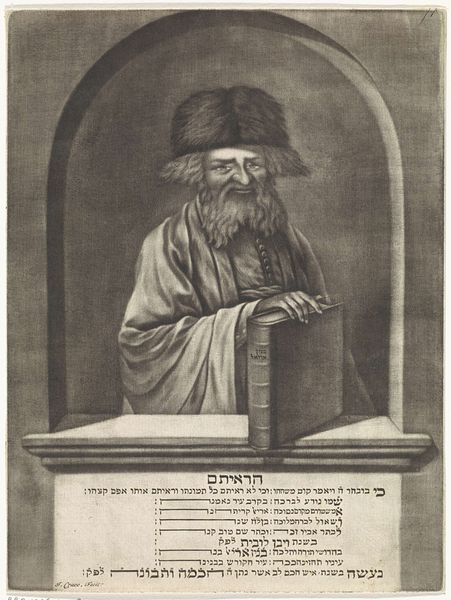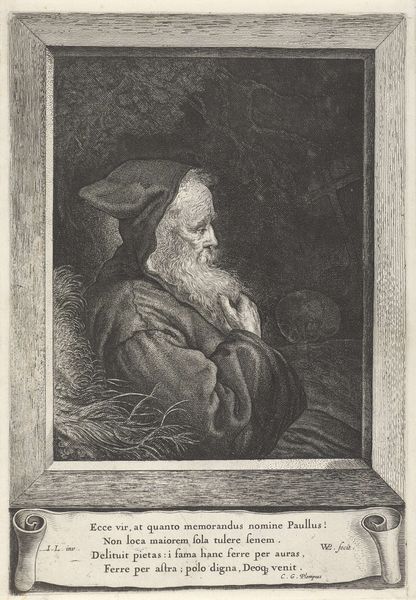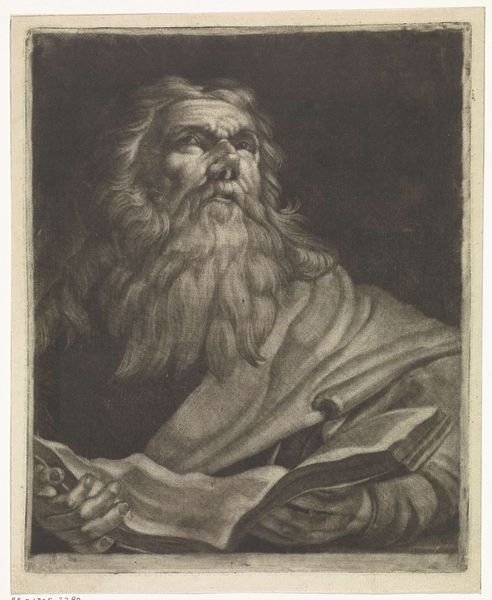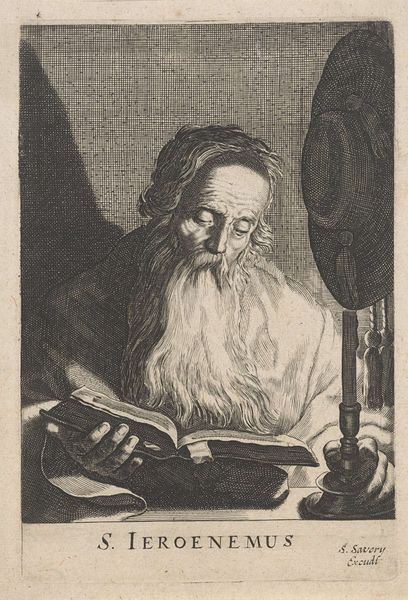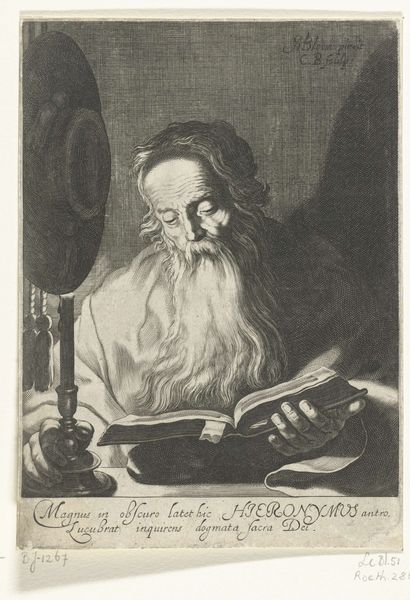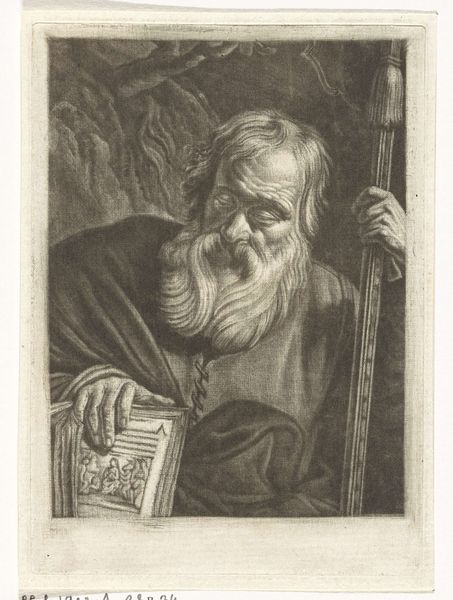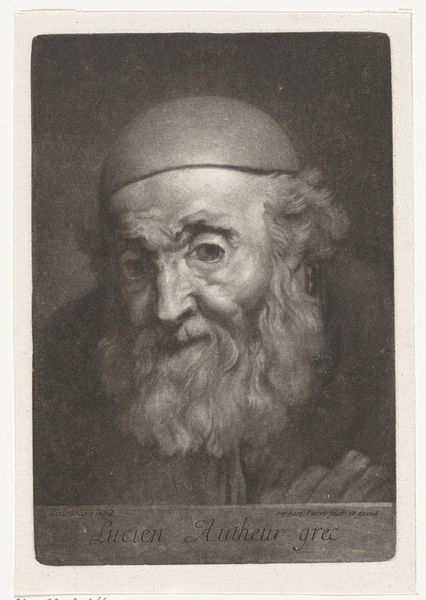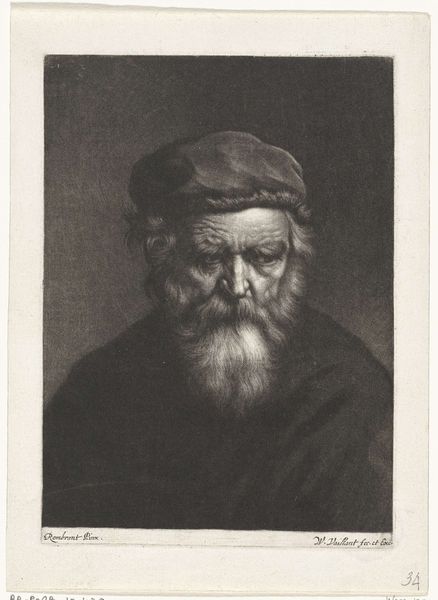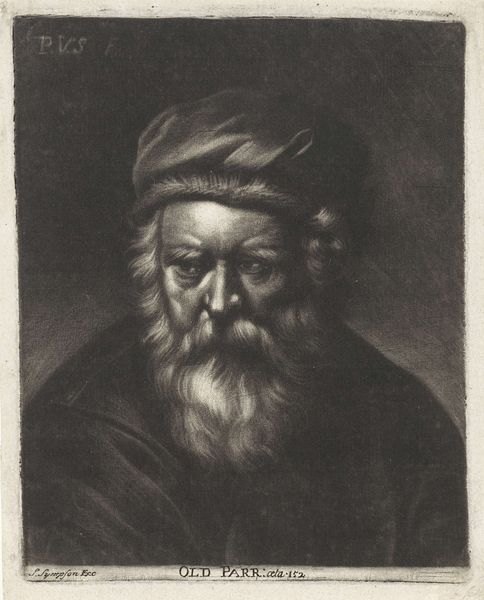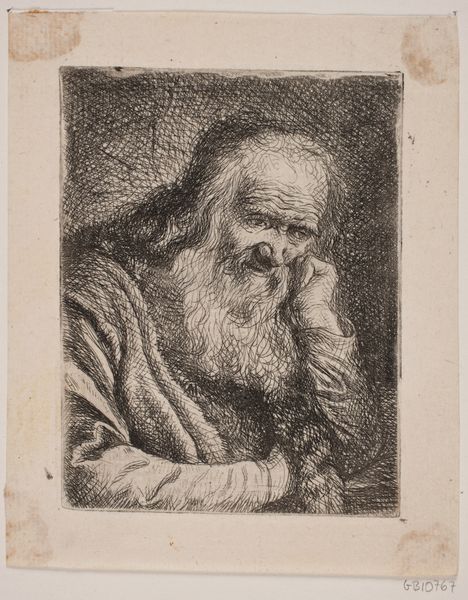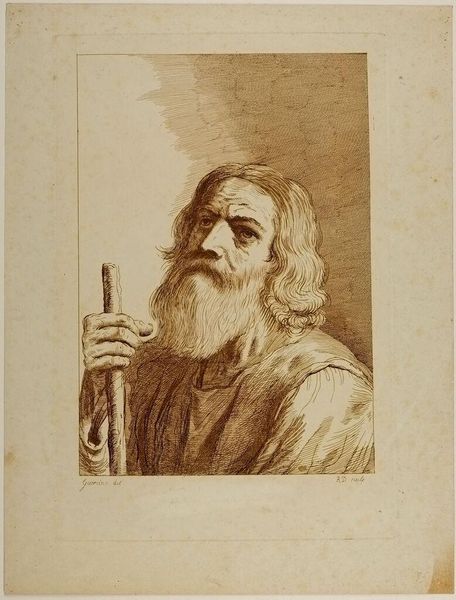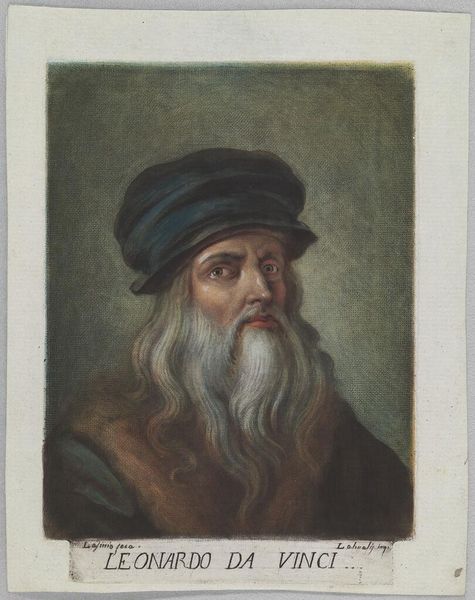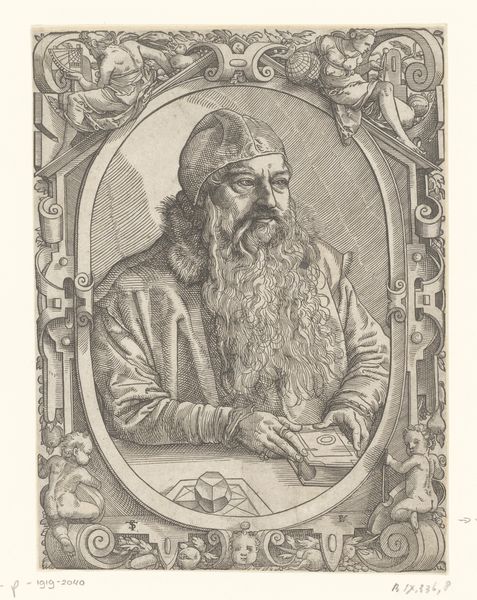
drawing, paper, pencil
#
portrait
#
drawing
#
book
#
charcoal drawing
#
paper
#
pencil drawing
#
pencil
#
portrait drawing
#
academic-art
#
realism
Dimensions: height 250 mm, width 187 mm
Copyright: Rijks Museum: Open Domain
Johannes Craco made this portrait of Saul ben Aryeh Loeb Loewenstamm sometime in the late 18th or early 19th century using etching and engraving. This printmaking technique involves cutting lines into a metal plate. The plate is inked, and then the surface is wiped clean, leaving ink only in the incised lines. It’s then pressed onto paper, transferring the image. The fine, precise lines we see here are a testament to Craco's skill, and the labor involved in producing such detail. But consider too the social context. Printmaking was essential for disseminating images and ideas widely during this period. This portrait would have made Loewenstamm’s likeness accessible to a broad audience, beyond those who could afford a painted portrait. So, when you look at this print, think about the layers of work embedded within it, from the artist's precise hand to the technologies of reproduction. It's a reminder that even seemingly straightforward images have complex stories to tell about labor, access, and the circulation of knowledge.
Comments
No comments
Be the first to comment and join the conversation on the ultimate creative platform.
